 W
WIn British folklore, the Beast of Bodmin Moor, is a phantom wild cat purported to live in Cornwall, England, United Kingdom. Bodmin Moor became a centre of purported sightings after 1978, with occasional reports of mutilated slain livestock; the alleged panther/ leopard-like black cats of the same region came to be popularly known as the Beast of Bodmin Moor.
 W
WBeunans Meriasek is a Cornish play completed in 1504. Its subject is the legends of the life of Saint Meriasek or Meriadoc, patron saint of Camborne, whose veneration was popular in Cornwall, Brittany, and elsewhere. It was written in the Cornish language, probably written around the same time and in the same place as Bewnans Ke, the only other extant Cornish play taking a saint's life as its subject.
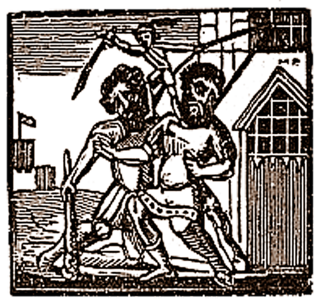 W
WBlunderbore is a giant of Cornish and English folklore. A number of folk and fairy tales include a giant named Blunderbore, most notably "Jack the Giant Killer". The stories usually associate him with the area of Penwith.
 W
WThe Carters of Prussia Cove were a family of Cornish smugglers active in the late 18th century operating out of Prussia Cove, Cornwall, where they had a hideout/home in a remote cliff next to the ocean.
 W
WCoel, also called Coel Hen, is a figure prominent in Welsh literature and legend since the Middle Ages. Early Welsh tradition knew of a Coel Hen, a c. 4th-century leader in Roman or Sub-Roman Britain and the progenitor of several kingly lines in Yr Hen Ogledd, the Brittonic-speaking part of what is now northern England and southern Scotland.
 W
WCorineus, in medieval British legend, was a prodigious warrior, a fighter of giants, and the eponymous founder of Cornwall.
 W
WCormoran is a giant associated with St. Michael's Mount in the folklore of Cornwall. Local tradition credits him with creating the island, in some versions with the aid of his wife Cormelian, and using it as a base to raid cattle from the mainland communities. Cormoran appears in the English fairy tale "Jack the Giant Killer" as the first giant slain by the hero, Jack, and in tales of "Tom the Tinkeard" as a giant too old to present a serious threat.
 W
WCornish mythology is the folk tradition and mythology of the Cornish people. It consists partly of folk traditions developed in Cornwall and partly of traditions developed by Britons elsewhere before the end of the first millennium, often shared with those of the Breton and Welsh peoples. Some of this contains remnants of the mythology of pre-Christian Britain.
 W
WCrying The Neck is a harvest festival tradition once common in counties of Devon and Cornwall in the United Kingdom in Europe. The tradition declined following the invention of machines such as the combine harvester.
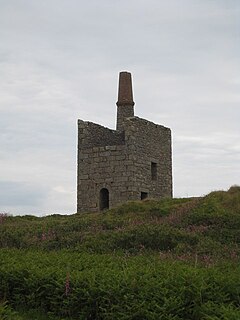 W
WThe Ding Dong mines lie in an old and extensive mining area situated in the parish of Madron, in Penwith, Cornwall, England. They are about two miles north east of the St Just to Penzance road. They look out over Mount's Bay and St Michael's Mount to the south west. Since 2006 the site has been a UNESCO World Heritage Site, part of Cornwall and West Devon Mining Landscape.
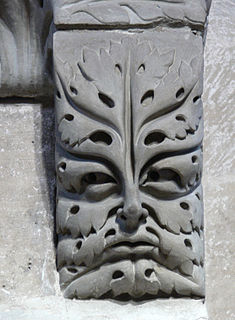 W
WThe Green Man, and very occasionally the Green Woman, is a legendary being primarily interpreted as a symbol of rebirth, representing the cycle of new growth that occurs every spring. The Green Man is most commonly depicted in a sculpture, or other representation of a face which is made of, or completely surrounded by, leaves.
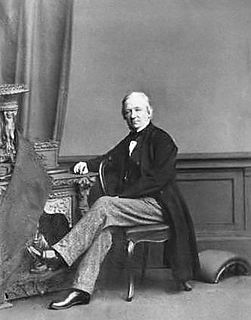 W
WRobert Hunt was a British mineralogist, as well as an antiquarian, an amateur poet, and an early pioneer of photography. He was born at Devonport, Plymouth and died in London on 17 October 1887.
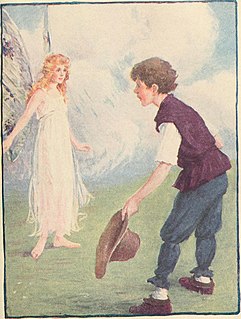 W
WJack is an archetypal Cornish and English hero and stock character appearing in legends, fairy tales, and nursery rhymes.
 W
WJoan the Wad is a mythological character in Cornish folklore. She is the Queen of the Pixies, which are tiny mythical creatures usually associated with the counties of Cornwall and Devon in England.
 W
WThe Mermaid of Zennor is a popular Cornish folk tale that was first recorded by the Cornish folklorist William Bottrell in 1873. The legend has inspired works of poetry, literature and art.
 W
WA pixie is a mythical creature of British folklore. Pixies are considered to be particularly concentrated in the high moorland areas around Devon and Cornwall, suggesting some Celtic origin for the belief and name.
 W
WSaint Senara is a legendary Cornish saint with links to the village of Zennor on the north coast of Cornwall , UK. The Church of Saint Senara, Zennor is dedicated to her; the village, nearby headland Zennor Head, and the neolithic tomb Zennor Quoit received her name indirectly.